What to Feed a Finicky Senior Dog
Getting older dogs to eat can often be a challenge as there are multiple reasons for our golden oldies to decide that they're just not that hungry anymore.
A gradual decrease in appetite which isn't accompanied by any other changes or signs of illnessmight simply be due to the slowing down of the metabolism and reduced energy expenditure which accompanies aging. This is fairly common.
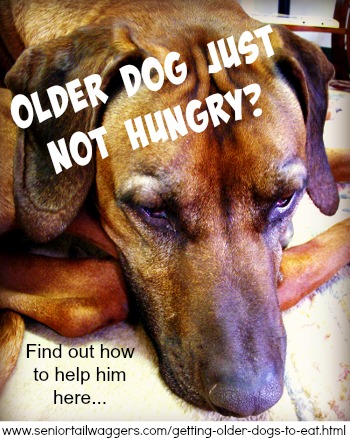
But it could also be caused by a variety of different health problems – either major or minor.
It's important to rule out a health condition being at the root of the problem.
That way you know whether you're dealing with a dog whose appetite is decreasing due to the normal aging process or because of health problems.
As dogs age their senses decline, this includes sight and hearing, but also the senses of smell and taste. They may also have chronic, although not serious, problems which can affect appetite.
With a dog who will not eat, the chronic lack of appetite can lead to weight loss, lethargy and even dehydration – and these can be life-threatening in their own right.
So, it's always important to tackle your older dogs reluctance to eat quickly.
First, we will review how health can affect your dog's appetite before reviewing 9 tips to get your old dog to eat more.
How Health Can Affect Your Dog's Appetite
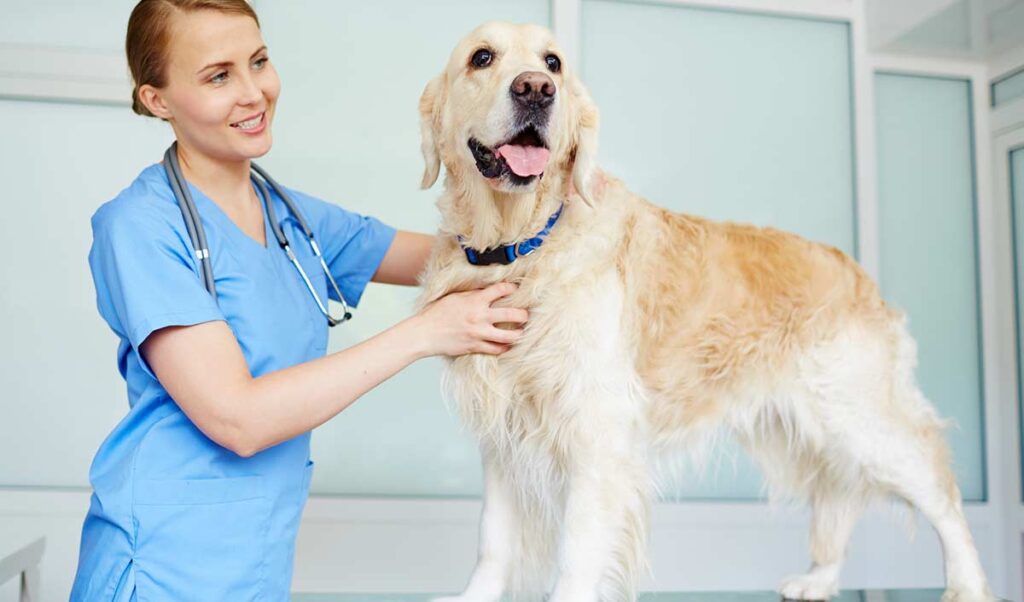
There are a lot of different health problems which can have loss of appetite as a symptom.
WATCH: 3 Important Tips To Care For an Old Dog [VET VIDEO]
You can find out all about these on this page…. Older Dog Not Eating?
Because it can be difficult to tell the difference between a minor problem and a serious one, your first step towards ruling out disease/illness should be a thorough veterinary check up.
Basic tests often start with blood tests plus urine and fecal tests, and a dental examination.
These are usually affordable and can diagnose (or rule out) urinary tract problems, some organ-related diseases, thyroid problems and dental issues. Major ailments such as these should be treated directly, which in turn should increase your dog's appetite.
When the results are ambiguous or indicate that there may be a health issue, abdominal and chest X-rays or ultrasound is a logical next step.
This also applies if the first tests don't find anything definitive, but your old dog continues to refuse to eat.
If your veterinarian doesn't find any serious health problems, that's great news for everyone, but doesn't necessarily mean that your pet is going to start eating normally again just because the vet says he's doing well 🙁
There are a host of minor issues that can make your old dog feel like he doesn't want to eat.
These can include:
- Constipation
- Failing senses of taste/smell
- Chronic, low-grade pain
- Stiffness from arthritis or back problems
- One of the symptoms of Old Dog Syndrome
- Medication side-effects
Remedies:
For constipation: Increase fluids either by soaking kibble, and/or adding canned (wet food) or gravies. Flavor drinking water with a little low-sodium chicken broth. Add a tablespoon of canned pumpkin (not the pie filling variety) to meals once a day.
Reduced senses of taste/smell: Add gravy, broth, canned food or tasty additives to make his meals more appealing. See tips below. Warm up the food to release scent and flavor
Low-grade pain/discomfort: Dogs can be stoic, and most older dogs have some degree of stiffness or pain due to arthritis, joint problems or back problems. Veterinary prescribed pain medications, anti-inflammatories or muscle-relaxants can help. Talk to your vet about medication options, as you shouldn't give your dog anything without your vet's approval.
Gentle massage, stroking or brushing, can improve blood flow and reduce pain in aching areas. This can also be aided with warm, not hot, heat packs or beanbags.
Medication side effects: Some medications can have loss of appetite as a side effect. Obviously depending on the reason for the medication being given, you may just have to continue to use it and do your best to encourage your dog to eat regardless.
Other times there are different or optional drugs your veterinarian could prescribe, and these may not cause the same problems.
Some medications that are commonly prescribed for senior dogs and which can cause loss of appetite include (but are not limited to):
- Proin or Propalin (to treat urinary incontinence)
- Meloxicam, Metacam, Rimadyl and Deramaxx (anti-inflammatories)
- Clavamox, Amoxicillin, Doxycycline, Baytril (antibiotics)
- Tramadol (a pain-killer)
- Lysodren (to treat Cushings' Disease)
9 Tips to Feed Senior Dogs With Poor Appetites
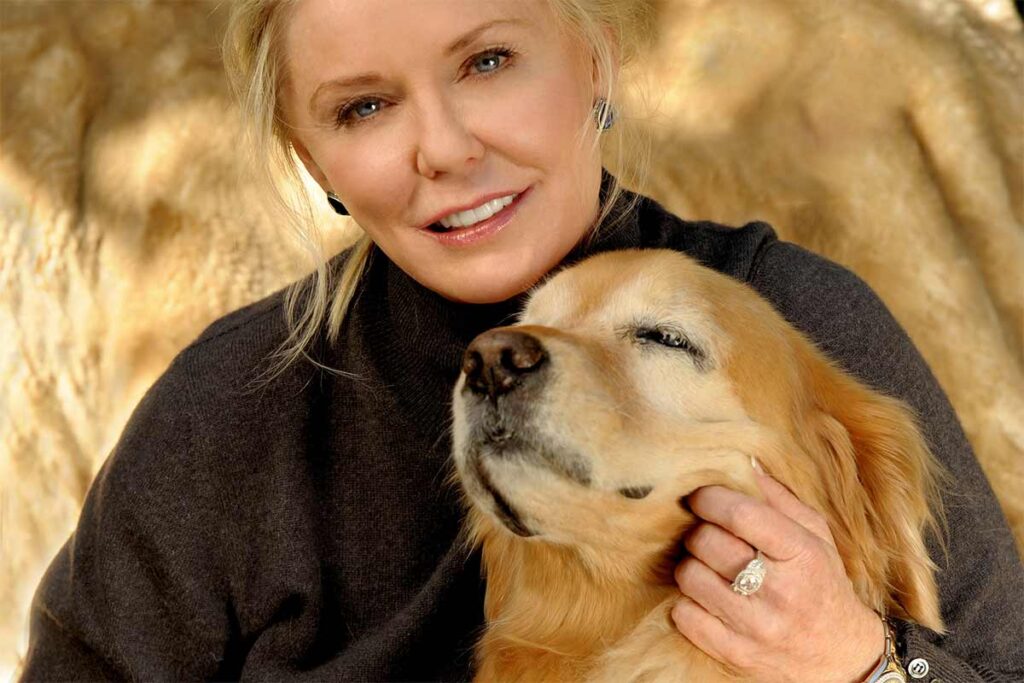
If your veterinarian decides that your older dogs' loss of appetite isn't due to any specific health problem, then you're faced with trying to find ways to encourage your golden oldie to eat.
Because it's so worrying when your dog isn't eating properly, it can be tempting to feed him whatever he wants, but this isn't a good idea – for several reasons.
First of all, if there's less food going into him, then what he does eat needs to be giving him maximum nutritional benefits right?
Plus, older dogs (even those who are in good general health) have older organs and digestive systems… foods which are high in salt, sugar, chemicals etc. put extra stress on the body and could end up causing more problems.
1. Pick food that fits his own unique dietary needs:
Unfortunately, just picking out a dog food that has 'Senior Formula' on the package doesn't mean that it's going to be what Fido needs either. You'll need to choose a food that fits his own unique dietary needs – more specifically his general health and activity level.
I'd recommend starting out by taking a look at this page… Senior Dog Nutrition… because it has all the info and advice you need to make sure that you're feeding your old dog the best food for him.
2. Pick food that is safe for their health issues:
If your dog has existing health problems, then finding a food which is safe and won't aggravate them is important.
Remember, your veterinarian is a wonderful resource for dietary advice, and so don't hesitate to give them a call to discuss options. If they cannot help, most vets will work closely with animal health professionals and will be able to put you in contact with a canine nutritionist.
This page can help you with that… Food For Senior Dogs With Health Problems.
3. Make His Meals More Appealing:
Senior dogs often have senses which aren't as sharp as they used to be.
If his food doesn't taste (or smell) yummy anymore then chances are Fido isn't going to be overly keen to eat it.
So, your goal is to make his dinner as irresistible as possible.
You can do this by adding a little 'extra' to his bowl… but you don't want to be adding extra empty calories if you can help it.
Here are a few suggestions to start with:
- Proprietary dog food 'gravies'

PEDIGREE CHOICE CUTS in Gravy Adult Soft Wet...
- Contains eighteen (18) 3.5 oz. pouches in PEDIGREE CHOICE CUTS in Gravy Adult Wet Dog Food Variety Pack: (6) Beef, Noodle & Vegetables Flavor in Sauce (6) Grilled Chicken Flavor in Sauce, (6) Filet Mignon Flavor in Gravy
- Clear (low-sodium) chicken broth
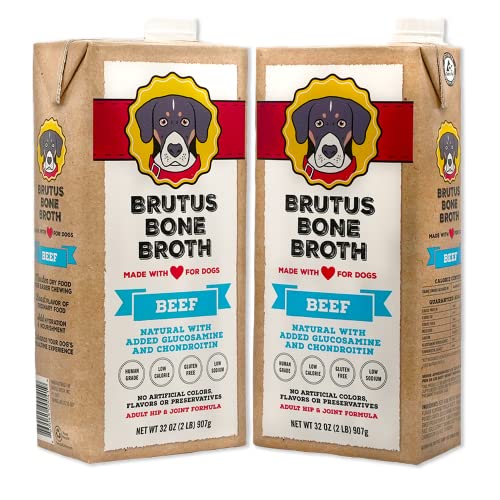
Brutus Bone Broth for Dogs 64 oz | All...
- SUPPORTS JOINT HEALTH: Every serving of Brutus Bone Broth for dogs is infused with Glucosamine and Chondroitin to support healthy hips and joints in all dogs including puppies and older dogs.
- Low-fat peanut butter with warm water until it's a liquid
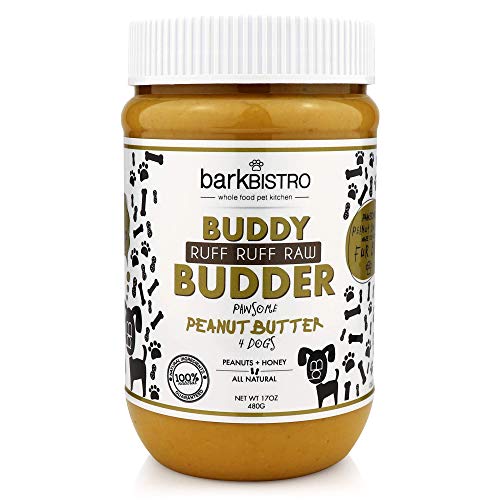
Bark Bistro Company, Ruff Ruff Raw Buddy...
- ✔️ HEALTHY DOG TREAT - if you wouldn't eat its why would you feed it to your dog, aka your furry family member? That's why we made an all natural peanut butter for dogs that's fit for human consumption. It two simple ingredients peanuts and honey. Theres no high fructose corn syrup, stabilizers, xylitol, artificial sugar, or salts.
- Low-fat cottage cheese, or sprinkle his meal with dried Parmesan cheese
- Scrambled egg-whites
- A little canned (wet) dog food
- Canned green tripe to his food, or choose a dog food formula containing tripe
Some low-fat Peanut butters contain Xylitol (an artificial sweetener) which is toxic to dogs even in small doses. Make sure to read the label of any product you buy first. Or even better, buy dog-specific peanut butter.
Add any of these to your dog's dry kibble and mix it up well and your dog might decide that mealtimes are looking up!
Here are a handful of other tips that can help make Fidos' meals more appealing to him.
4. Try heating the whole meal a little:
If his kibble is mixed with gravy, canned food or one other suggestions above, try heating the whole meal a little. This makes it smell tastier and releases the flavor more easily.
If you're feeding just dry food, soak the kibble in warm water (or better still, broth) for 10 minutes before offering it to your dog.
Variety is the spice of life! This is so, so true when it comes to encouraging a picky dog to eat.
5. Try varying your dog's meals:
Try varying what you add to your dog's meal on a daily, or at least 3 times weekly, basis.
Your old dog may have lost his appetite, but he's still got his brain cells… and will likely try to earn progressively tastier meals by refusing to eat a specific combination for more than a couple of days in a row!
You can thwart him, without him realizing it, by being ahead of the game so switch things up regularly.
6. Consider bone broth, a super-tasty and simple addition:
Bone broth is tasty, nutrient dense and super-simple to make for your dog.
It's a versatile, all-natural superfood! Perfect for dogs whose appetites are poor or who need extra encouragement to eat.
Bone broth can be added to his regular food, offered as a tasty drink in addition to his regular water, or used to encourage sick or convalescing dogs to begin eating.
Check out this page to learn more…. Bone Broth for Senior Dogs
7. Experiment with canned (wet) food:
Canned/wet food can be a good option for older / senior dogs. For an older dog who's not eating well, sometimes a change in food can help. If you've always fed dry kibble, then now might be the time to start mixing a little canned food in with the dry.
Senior dogs with dental problems often find it easier to eat soft food rather than hard kibble.
Canned dog food contains a lot more water than dry food (obviously!) so it's also a good way to get more fluids into your older dog.
But there is a downside to canned food… there's less nutrition in it per cup when compared to kibble.
So, feeding canned food alone isn't a great choice unless you have a very small dog (big dogs really can't eat enough canned food to fulfill their nutritional needs, and you're on this page because you're having trouble getting your old dog to eat at all!)
Soaking the dry kibble in warm water (or broth) and then mixing it with canned food will give you the best of both worlds and is what I tend to do when I'm trying to tempt a dog to eat more.
8. Feed your dog less… but more often:
A big meal might be too much for your older dog to stomach, but a smaller portion (especially if you use one of the above tips to make it more appealing) might be just what the doctor ordered.
Adult dogs often only eat once a day, but a senior dog usually does better with two (or three) smaller meals.
Every dog is different and you know your dog best, so if you think feeding him a handful of tasty food six times a day is the best way to get him to eat, then do it.
There's no 'one-size-fits-all rule at this point. BUT, don't overfeed him.
The aim is not to have him develop other health problems such as carrying a bunch of extra weight!
If you're feeding him three, four, five or even six times each day, divide his daily intake up into that number of portions.
9. Minimize in-between meal snacks & treats:
If Fido's appetite is already low, he could feel 'full' after half-a-dozen dog treats. This means he doesn't think he has room for his 'proper' and nutritious food.
So, tempting as it may be to give that sad old face more treats, you actually need to give him less. Also, make any treats super-healthy ones, that way he's getting something with nutritional value rather than empty calories.
Freeze-dried liver treats or tiny slivers of meat (or ground beef) are my usual choices here.
Sometimes a treat can be used to kick-start your dog's appetite, especially for his first meal of the day.
Just give your dog one small treat (like the suggestions above) right before you give put down his bowl. It gets his 'juices' flowing.
This doesn't work with all dogs but it's worth a try.
Other Smart Ways To Get Older Dogs To Eat More
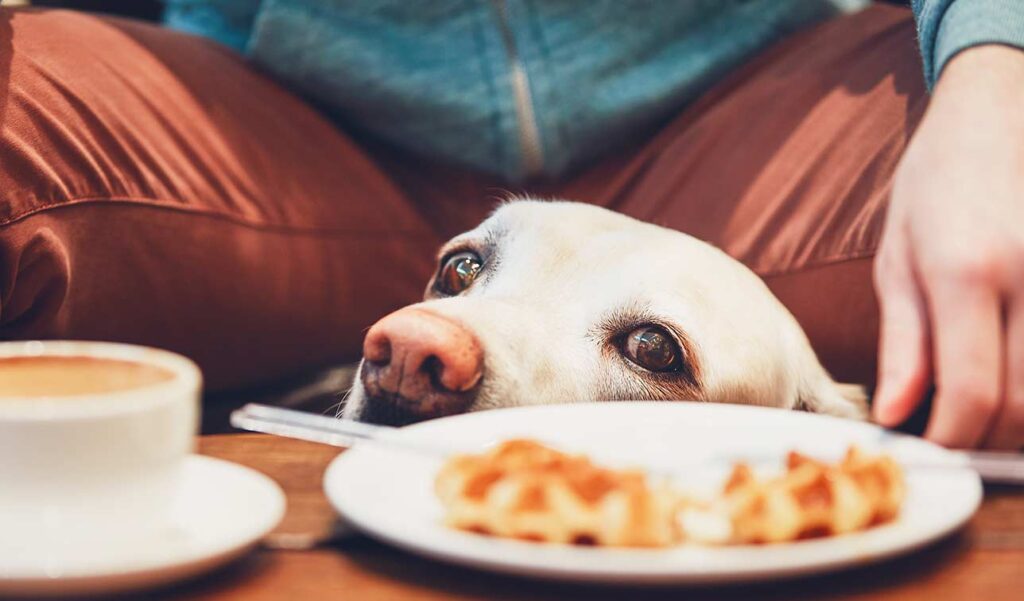
So, now we've looked at all the obvious (and some not-so-obvious) ways that you can tackle your older dogs appetite loss.
Here are a few more ideas that can also be helpful…
Increase Your Old Dog's Activity Level
We all know that the more active we are, the hungrier we get.
And getting older dogs to eat more is often easier when they've been more active and using up those calories.
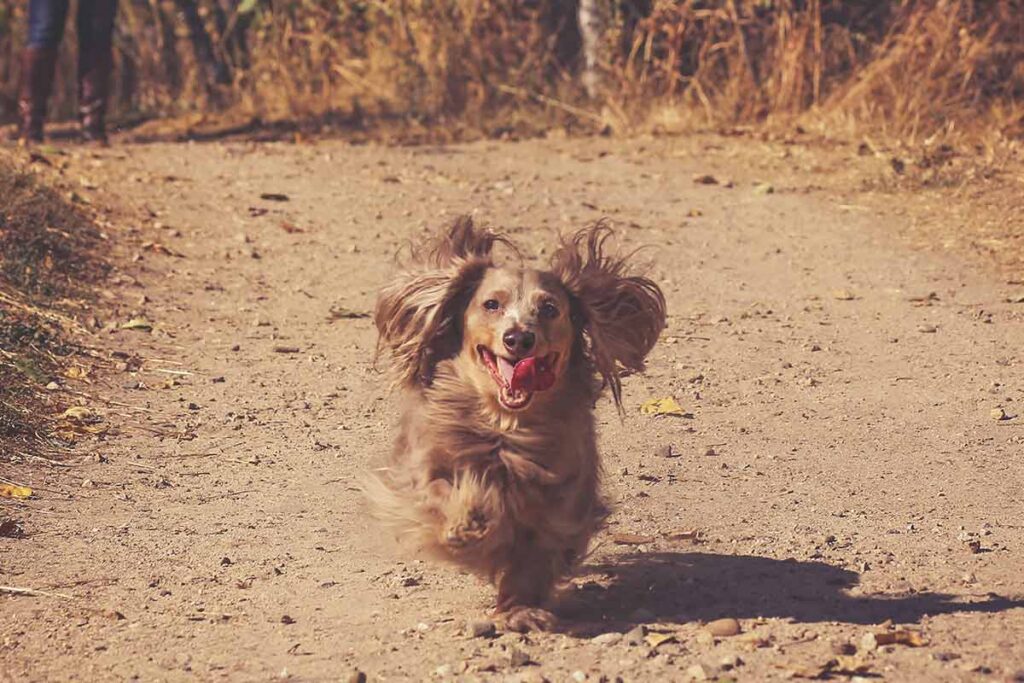
Obviously, there can be all sorts of reasons why senior dogs aren't very active – especially health issues like arthritis, back problems, heart conditions and so on.
BUT, most times you can increase your dog's activity level just a little (do it gradually) without any difficulty.
If Fido does have health problems, do check with your vet first to make sure that this is okay to do.
We're not talking cross-country runs or agility courses here though. Just adding an extra 5 minutes to his daily walk (or making it two daily walks), or a gentle game of 'fetch' in the back yard can help.
Activity doesn't have to be all physical either. Mental activities use up energy and calories too – and if your old dog has slipped into a bit of a daily 'rut', the change of pace can really perk him up.
Interactive dog toys and games can be a lot of fun, and a reasonable challenge, for Fido. Find-the-treat type toys are excellent (again, make sure the treats inside are healthy!).
If it's been a while since your dog was in school, even a five-minute training session each day (a refresher course on 'Sit', 'Down' and 'Stay' for example), or learning how to balance a (healthy) treat on his nose, will challenge his brain and make the day more interesting.
You might be surprised to see what a difference this can make.
Use Elevated/Raised Feeding Dishes
Using elevated/raised food dishes can make it easier for your older dog to reach his meals comfortably.
These aren't just for large or giant breed seniors either. Even small dogs need them.
Sometimes it's difficult for a stiff dog to bend his neck or front legs properly… and if he feels off-balance or can't get back to a standing position easily, he may choose not to try to get to the bowl in the first place.
Long-bodied, low-slung dogs such as Dachshunds, Corgis and Basset Hounds can suffer from IVDD (Intervertebral Disc Disease) and have difficulty bending their neck or back.
There are lots of different styles, sizes and designs to choose from. Here are a few of the most popular options:
Elevated/Raised Feeding Dishes on Amazon:
Read more about senior dog nutrition:
Disclaimer: This website's content is not meant to be a substitute for veterinary care, diagnosis, or treatment. Always consult with your veterinarian to determine the best course of action. Read More.
camachothatted1966.blogspot.com
Source: https://seniortailwaggers.com/getting-older-dogs-to-eat/

0 Response to "What to Feed a Finicky Senior Dog"
Post a Comment